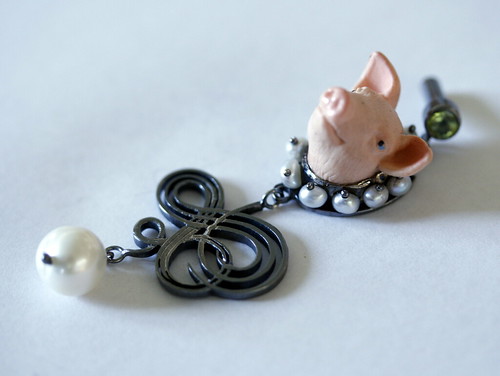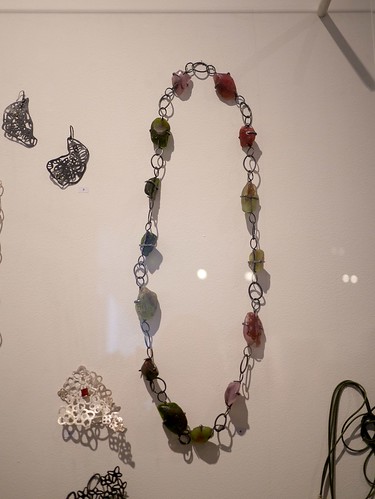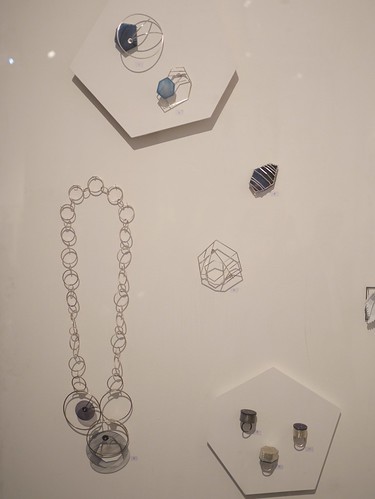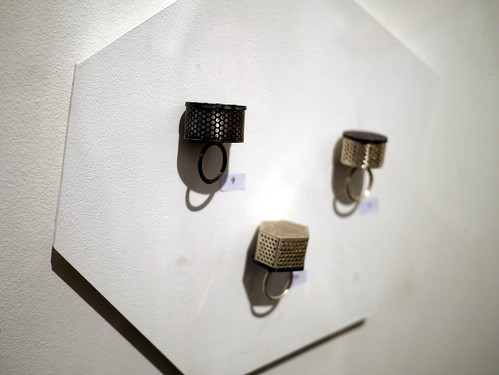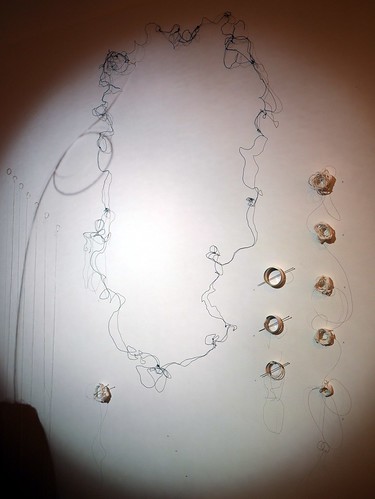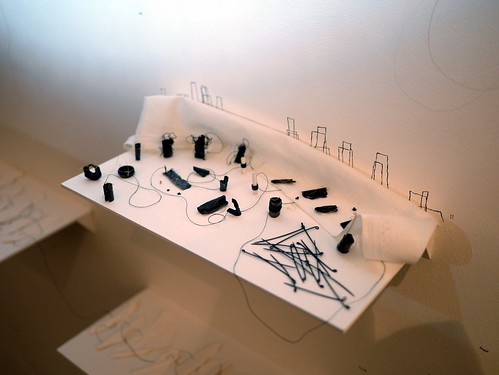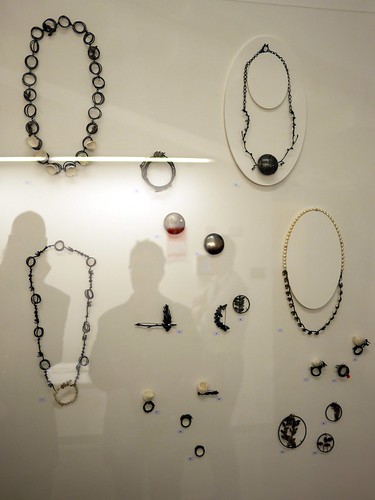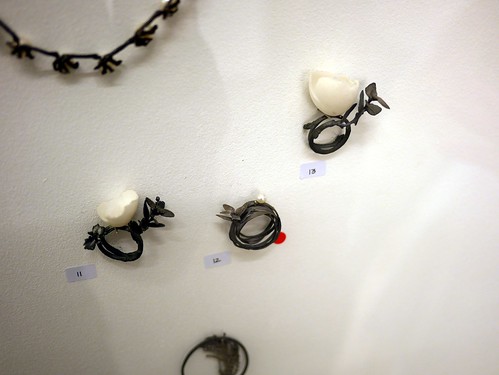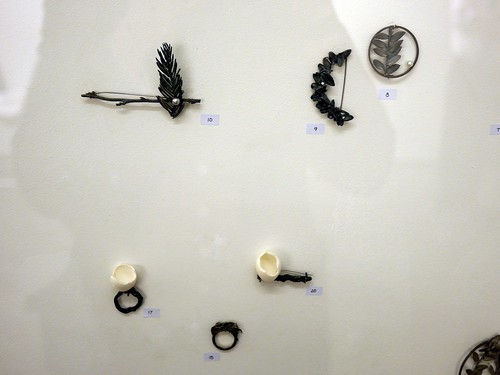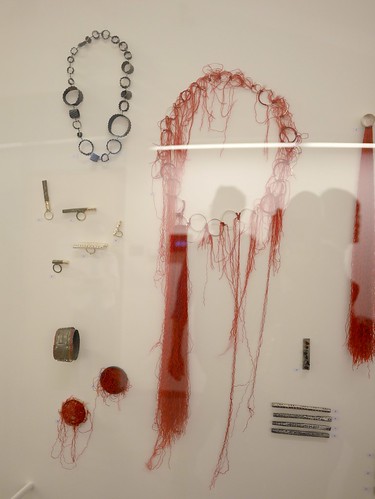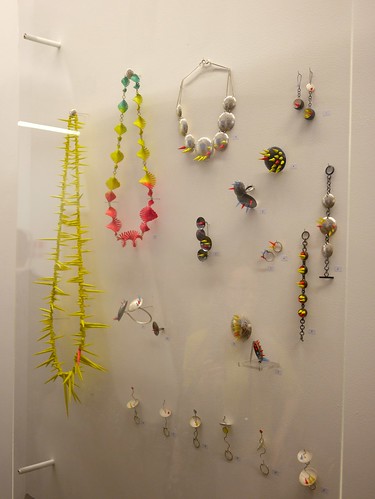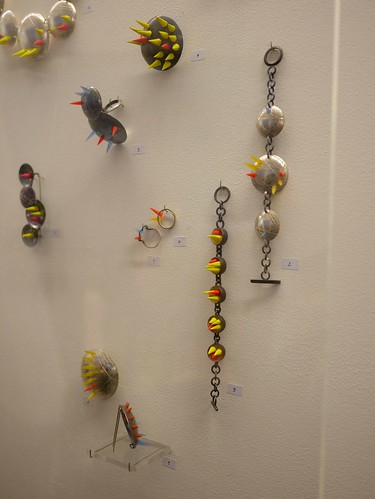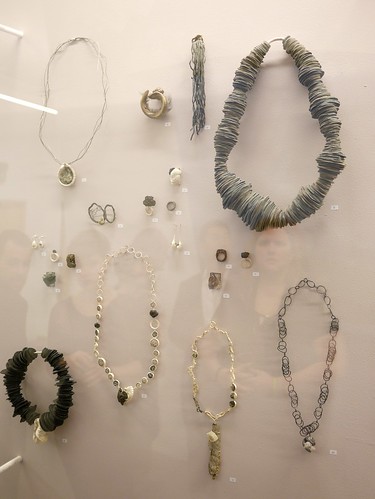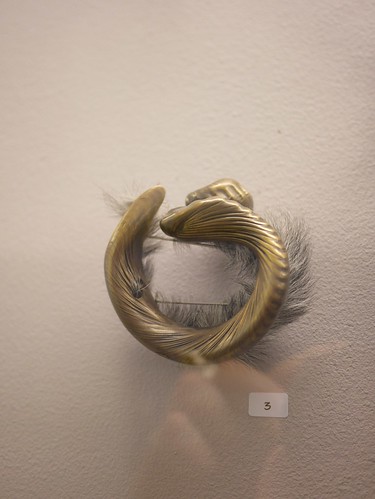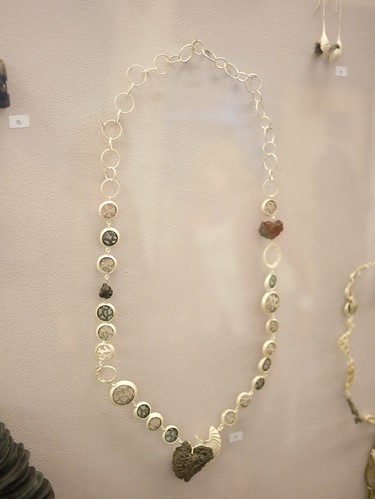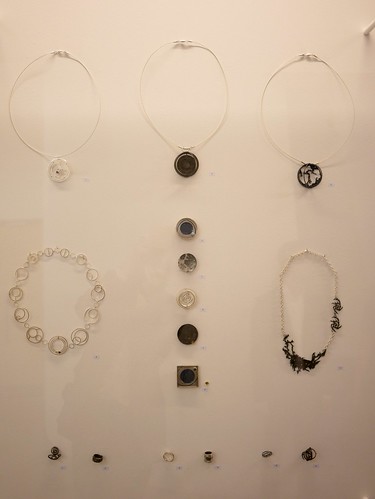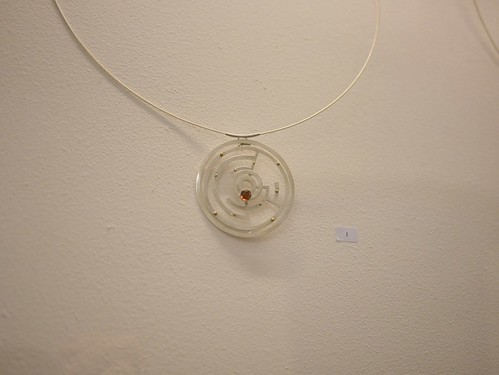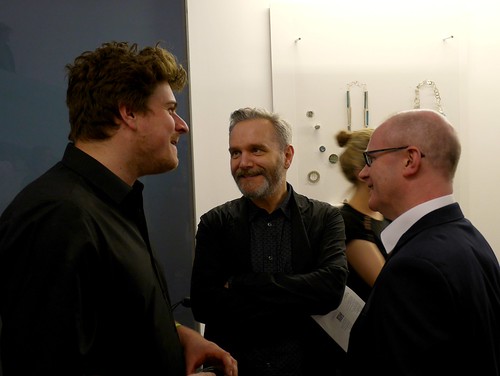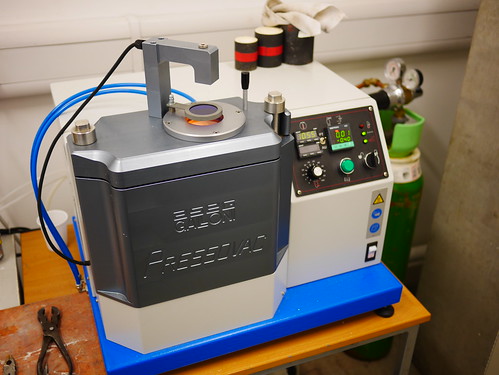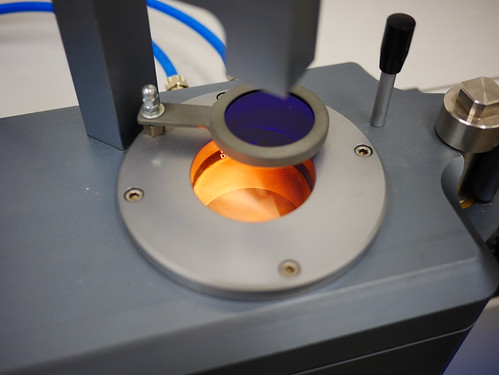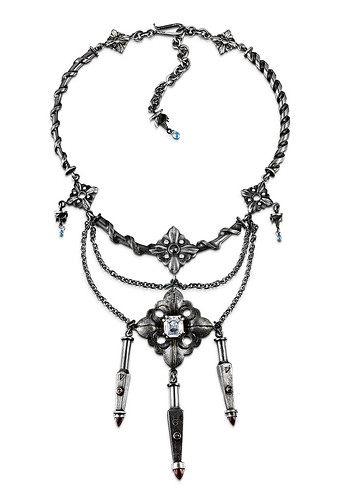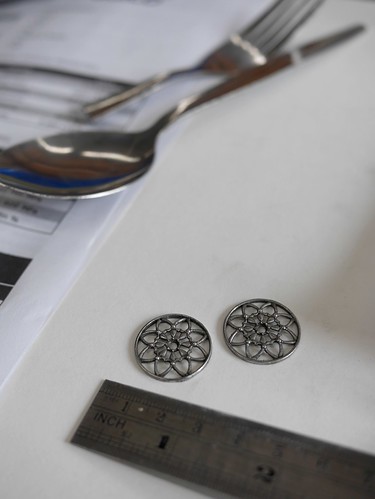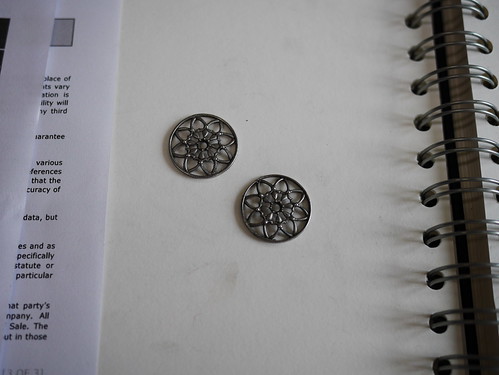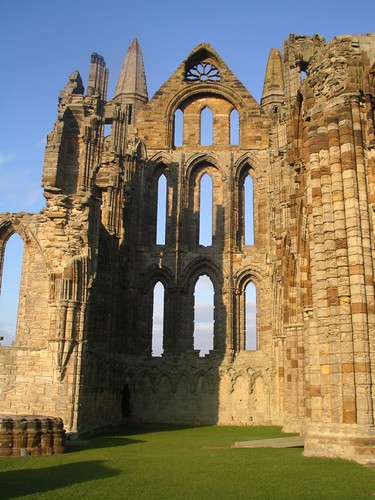I think the whole arts world knew about the fire in the Glasgow School of Art, the functional art-school building by Charles Rennie Mackintosh which was SO fit for purpose in the early 1900s that it is was still used on a daily basis until the fire a few weeks ago. I had messages from all over the world expressing regret and sympathy - as if someone had died - and I don't even work there. Several people have told me that they were in tears as it burnt, such is the emotional attachment people feel for the place. I hadn't seen the damage until the GSA degree show on Thursday night and it is much more shocking to stand outside with the vague smell of damp, burnt wood and see the shell of a building that I grew up admiring and knowing to be important.
Everyone has said that it will be reconstructed but the library has gone. I took this photograph almost exactly a year ago:
I was having a meeting with Callum Rice about his own degree presentation. While I am sure that it will be reconstructed perfectly, what will be missing is the patina of age that has been given to over 100 years of people using this space - the chips, the layers of tobacco staining (the library was a smoking room as well until the 1950s), the scuffs on the floor. Callum is a bit of a buff about the history of this place and I bumped into him on Thursday night and he, too, feels that something more than "just a building" has gone forever. As he said, "Those lamps were hammered out by men on the Clyde more used to building ships..." Something else that has gone forever.
A degree show is no place for an observer to be maudlin or political but is time for graduates to celebrate their successes and it was in stark contrast that directly across the road in the brand-new Reid Building which is a pretty standard-looking contemporary building of little interest from the outside.
It replaces the "Newbery Tower" which was another favourite building of mine, a brutalist monstrosity covered in copper plates. Horrible inside, it has to be admitted, but a remarkable structure from the outside.
The space inside the new Reid building, however, is quite amazing, very light and airy and reminiscent of 1930s "ship" architecture of the likes of Mendelssohn's "De La Warr Pavilion".
A big year this time around with 22 jewellery and silversmithing graduates and I wandered round the show more-or-less in the order presented from the entrance.
First off was a selection of exquisitely textured rings by Kirsty McQueen which manage to convey the sense of something found in the wild:
I particularly liked the first three above.
Catriona Clark has taken her theme from the many bridges which span the River Clyde in Glasgow. It is good to see that she has looked at the structure on a smaller scale than the perhaps obvious use of the arch structure and her use of enamel is subtle and intelligent:
I actually really enjoy it when the students take the time to talk about their work. As someone who can - and will - talk endlessly about my own work, I admire the passion in others and Hannah Ryan spoke to me at length about how she came up with her brilliant conceit of imagining that she had been commissioned to make pieces for Ludwig II of Bavaria:
Some of my favourite work in the show was Lindsay Hill's digitally-developed pieces exploring the internal structure of gemstones. She also took time to explain this work to me although it appealed greatly to me as soon as I saw it:
It may not be immediately obvious, but many of the stones are free to move within the pieces.
Jordane Symington's work contrasts natural and found materials with cast sections of the same material, for example wood or seaweed:
Roisin Hearn is presumably an undergraduate but there was something very conceptually advanced about her intriguing silverwares exploring aspects of not only the casting process but the function of the objects she was casting:
In every show, there will be some work which does not appeal to me and Duan Hangchen's work in plastics, pearls, gems and precious metals falls into that category. I am not really clear what she is doing with this collection, though I can see why some people will be sure to love it (and it is really nicely made):
Morna Darling has put together a lovely collection of very fine pieces made from mixed and patinated metals. The intense blues against the white silver is a seductive combination:
Over the last couple of years, I've noticed porcelain appearing in jewellery shows more and more. Maybe I'm only noticing it more now that I'm aware of it as a jewellery material thanks to working with Lisa Stevens on some pieces of my own. Whether it is just me noticing or whether more students are finding it an interesting material, I am pleased to see it.
Sarah-Louise McKay has produced a collection of work using porcelain which she has chosen to back-light. While I can understand her reasoning - porcelain being translucent - it actually made the pieces quite hard to see (more on the lighting of the show later...). Her shell-like pieces deserved a rather better presentation:
Another enthusiast who took time to engage with her audience was Nicole McCarron who not only invited people to pick up her work but to actually play with them, plucking and bending the elements to make them ring. The work is rather lovely and this dimension really adds to it.
Because these are not my own students, I am allowed to have favourites and my own favourite - as predicted by Sally Morrison! - was the remarkable work of Joy Bonfield-Colombara. I will let these pieces speak for themselves.
Her work immediately made me think of the work of "Arman":
Which I also love.
Ellis Mhairi Cameron is making work which, for me, is redolent of the coastal wildernesses around the north of Scotland:
I may well be wrong but the influence of Beth Legg seems strong in a couple of the graduates this year.
Liu Tong's comedic work with plastic toy animals is playful and interesting enough:
But it reminds me rather too much of the work of one of my own ex-students and now friend, Ellen Wilson and her "Purebrassneck" jewellery which she made in her final year with me in 2009...
It is nothing new to use plastic toys, I suppose - Felieke van der Leest has done it and I have even done it:
So perhaps it is just a coincidence.
The very subtle colouring of the resins in smooth lumps to contrast with the matted silver of Lotte Letch's work is intriguing:
I really like the restrained forms of Ailie Lawson's pieces, especially the rings:
The rings are particularly brilliant, I think, and I want them to be pomanders or nutmeg graters. Unfortunately, I didn't get to speak to the maker to find out.
One of the most interesting exhibits in the show was definitely the installation by Ciara Blath Stapleton who used video, thread, 18ct gold and mixed materials to create a moving and compelling piece of work from disparate jewellery pieces, including a neckpiece and brooches:
I was really taken with Mairi Preston's work, another maker who has been exploring porcelain amongst other materials - once more, the influence of Beth Legg - to create slightly sinister pieces which are also ultra-feminine and which reference far more traditional styles of jewellery:
She cast the porcelain into quail's eggs and made casts of a sparrow's feet (which her cat had caught!) to make some of this work.
From here to the end of the review, the photographs are not so good as the light was reflecting off the cabinets at this end of the gallery.
Kara McAulay's work left me a little bewildered and while I like some of the elements very much - the long, tubular forms with dots of colour, for example, didn't really understand how the other elements hung together.
Adam Henderson's work took two distinct paths, both perhaps dealing indirectly with ideas of identity. One set of his work used 3D prints of QR codes, distorting and damaging them, while the other - actually the work I preferred - looked at drawings of people which only resolved when viewed in very specific ways.
There is something really appealing about the jewellery of Cao Zhouyi who presented brightly-coloured, spiky pieces in plastics, possibly wood and silver. These pieces have a real comic-book quality and are really nicely finished:
There is something dark or uncanny about Jennifer McKinlay's work, something I can't quite pin down. She uses a combination of traditional and non-traditional materials to work with what she describes as "the human need to protect oneself".
Sun Yingzhou takes her inspiration from planetary orbits and the origins of the universe:
As ever, there is an excellent GSA Jewellery and Silversmithing webpage giving the contact details for all the students.
It is always good to catch up with people and I went round the show with my friend, Anthony Wong - who was up from Liverpool with his wife for their daughter's end-of-year performance at the Conservatoire - and my colleagues, David and Gordon. Jonathan Boyd was there, looking very tired but relieved and happy!
Other than that, I've been playing with the new "Pressovac" over-pressure vacuum casting machine and using it to cast stainless-steel:
For many years, I've been thinking about exploring the famous "Berlin Iron" jeweller but have never had the wherewithal to cast steel. I've explored the forms a little before in my previous work, "Ich gab kein Gold für dieses Eisen":
Now I can produce elements which are more direct references. In keeping with my usual working practices, I melted down old flatwares!
In case you are interested, this form refers to Whitby Abbey and is for the continuation of a piece I started in 2007.

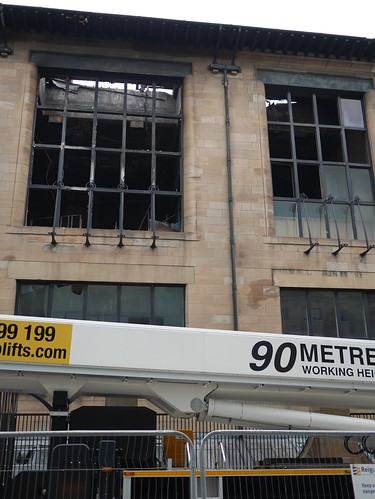
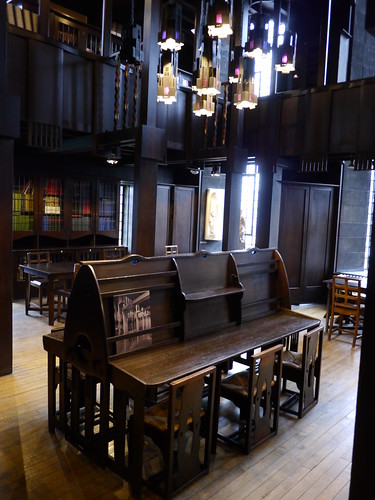
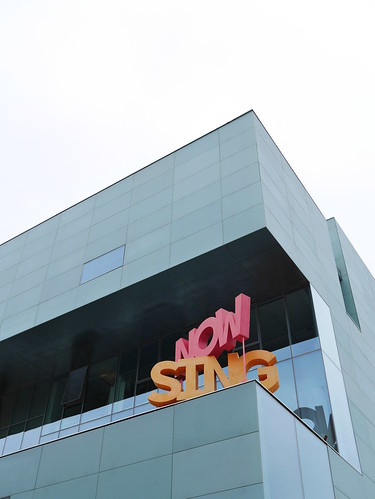
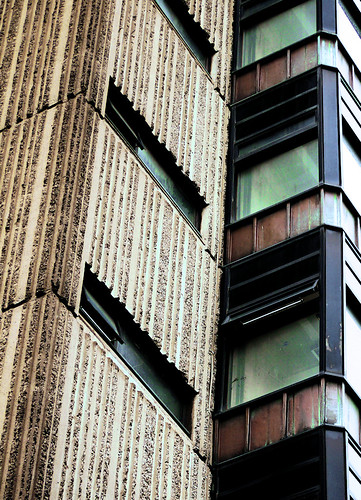
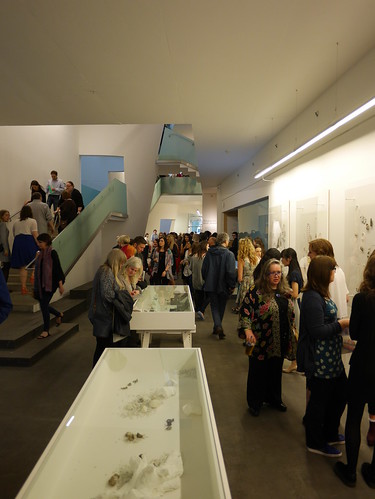

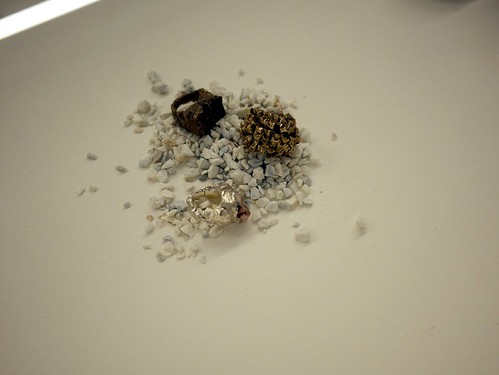

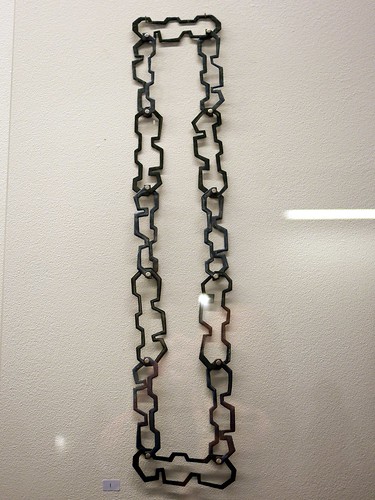
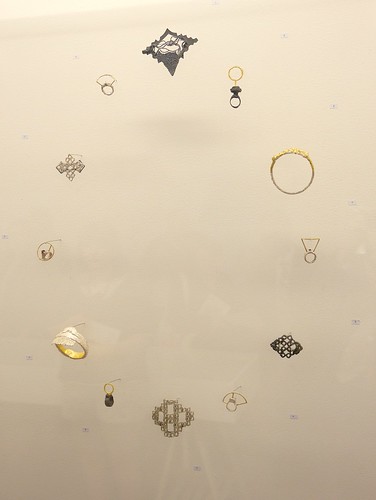
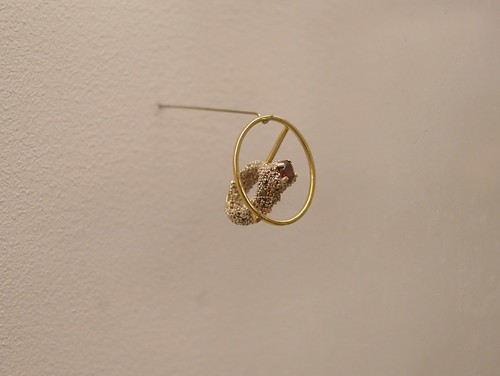
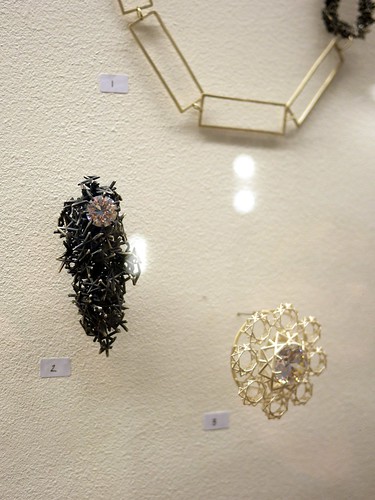

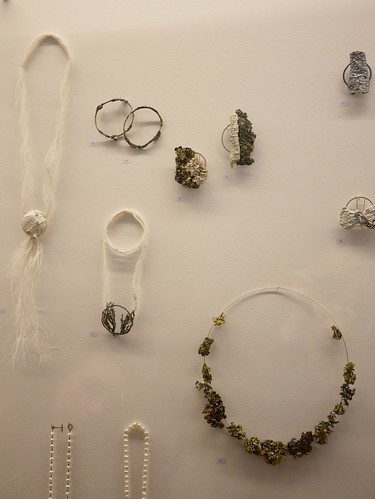
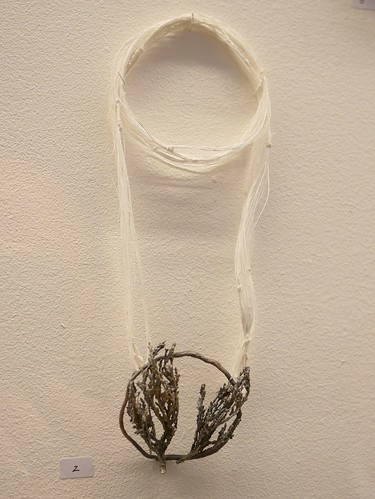
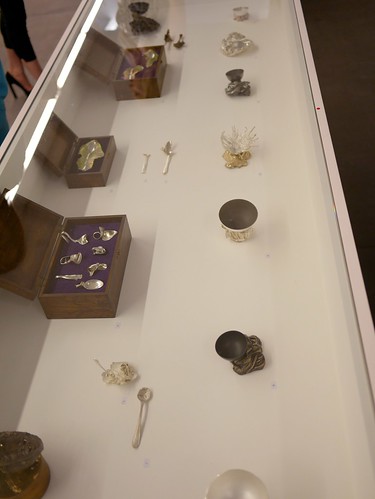
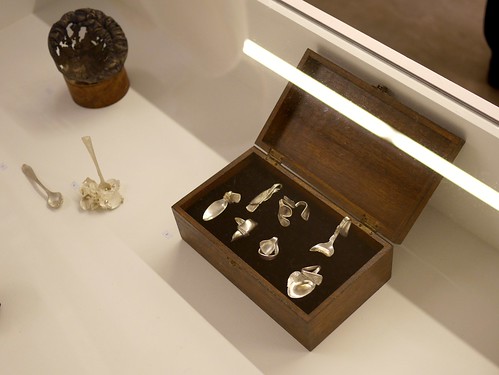
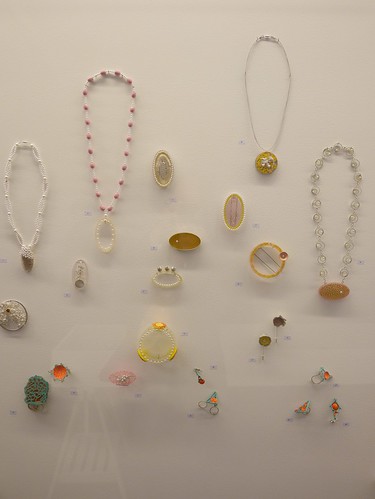
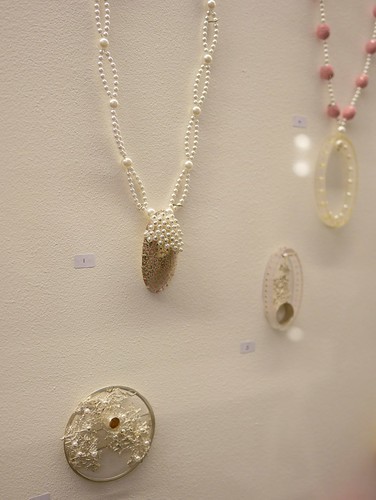
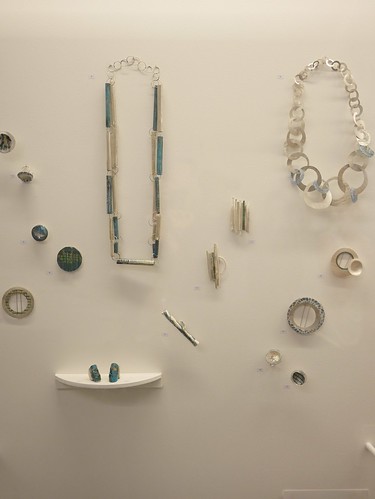

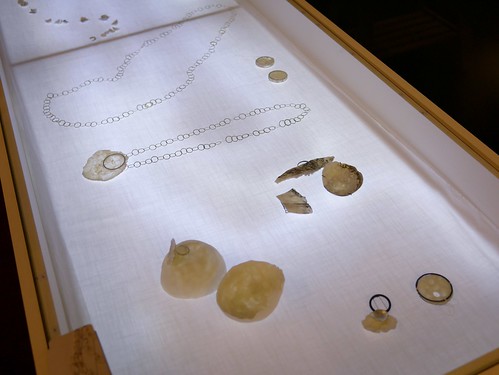
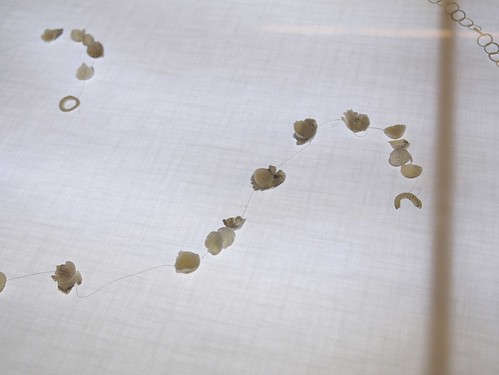
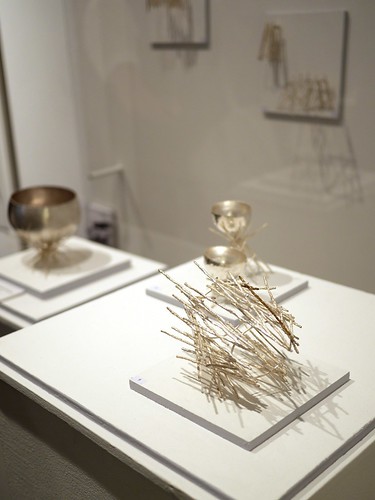
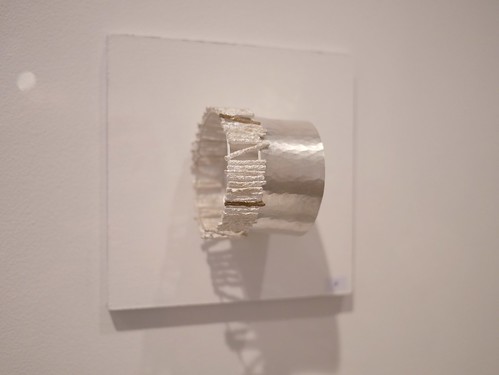
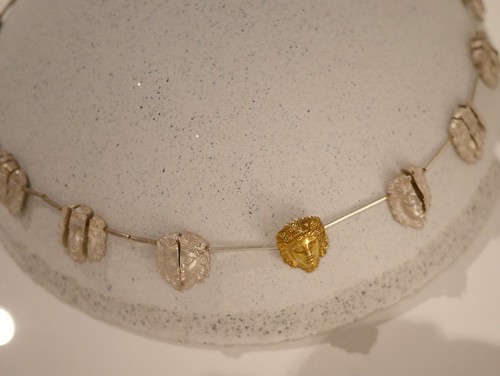
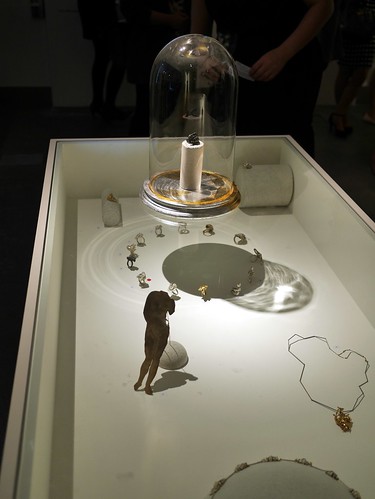
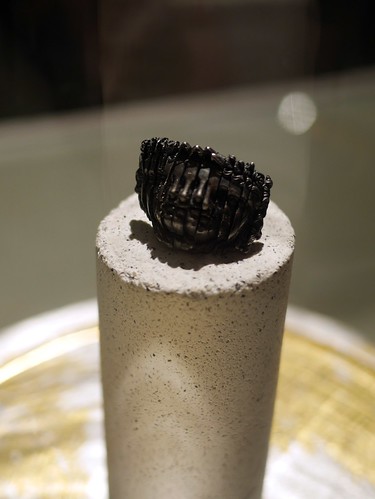
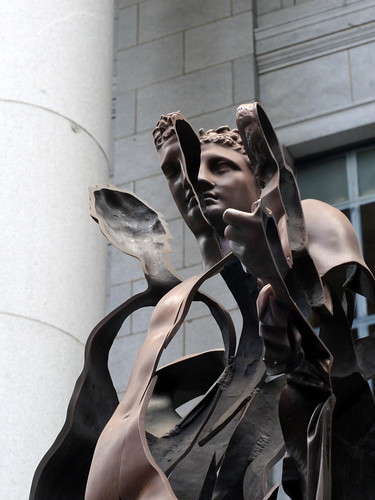
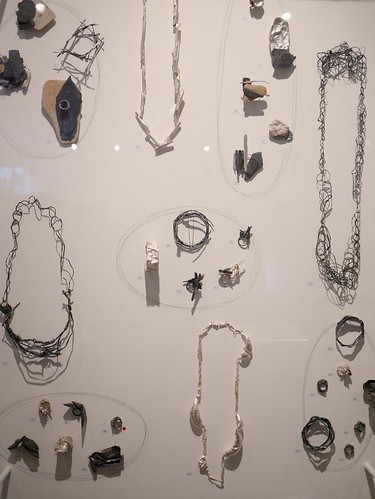
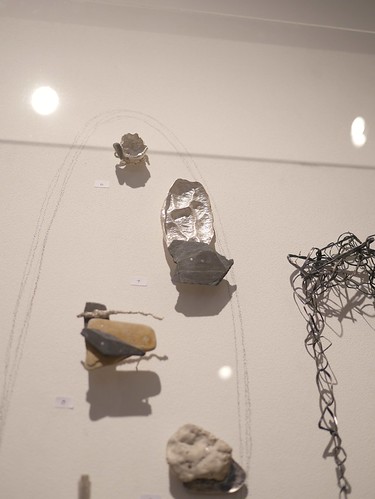
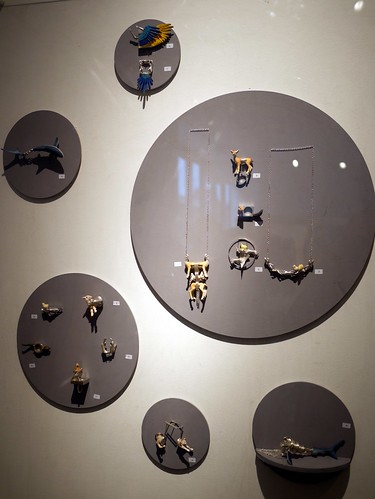
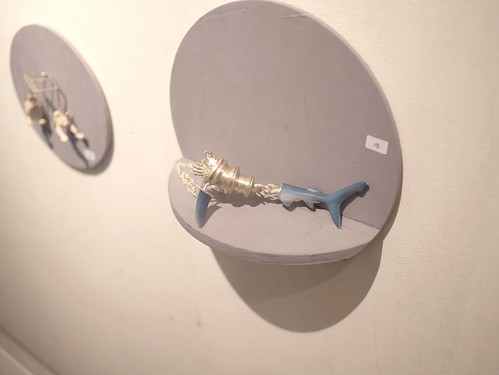
.jpg)
